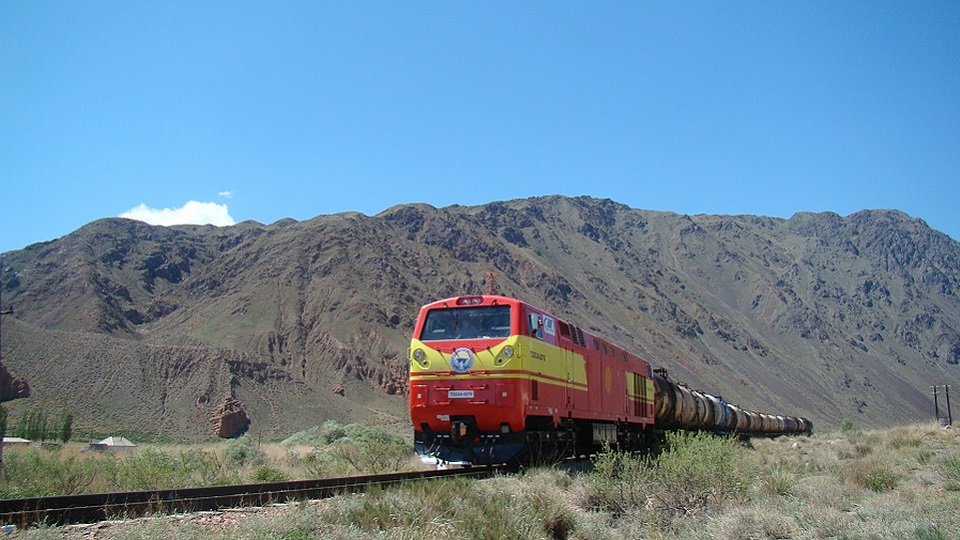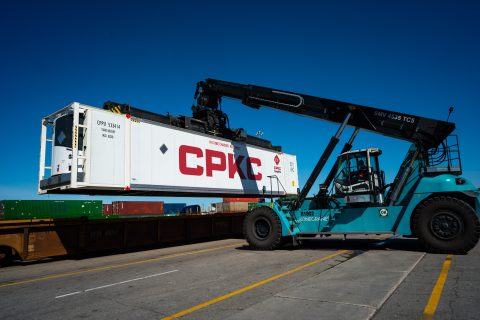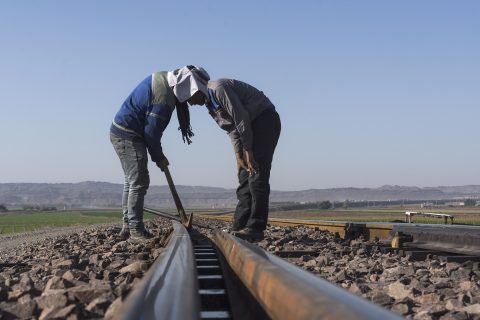First containers on the move on new China-Afghanistan corridor

Several containers are currently on the move to test the newly established corridor China-Kyrgyzstan-Uzbekistan-Afghanistan. The first 2 containers left the Chinese city of Kashgar on 13 September. The trial period is to last 3 months.
This was confirmed by the Kyrgyz national rail operator Kyrgyz Temir Zholu. The new corridor was formed in August by the railway companies of Central Asian countries, and Chinese logistics company Zhejiang Union of Railway International Logistics. On 11 September, they signed a protocol, and four days later the first containers were on the road.
What is this new corridor?
The new service is not an all-rail service. The first leg is carried by truck. From Kashgar, containers are trucked across the border to the Kyrgyz city of Osh. It is here that they are loaded on a train, which continues its way across the Central Asian countries to reach its final destination, Hairatan in Afghanistan.
A reason for the road leg could be that the border between China and Kyrgyzstan is situated in the Tian Shan mountain range, which impacts the efficiency of a train journey. With this multimodal solution, the journey should take a total of two weeks.
Currently, cargo between China and Afghanistan is mostly shipped via the seaport of Karachi, and overland through Pakistan. This is a journey that could easily take two months due to delays and transit hurdles. The Afghan Railway Authority has stated that import and export tariffs would be reduced significantly on goods being transported by rail, making the corridor more attractive.
Not the same as CKU
The Kashgar-Hairatan corridor is not to be mistaken with the much-anticipated China-Kyrgyzstan-Uzbekistan (CKU) railway line, which ends in the city of Andijan in Uzbekistan and does not include Afghanistan. Moreover, the CKU railway line is expected to pass through the agricultural region of Naryn, an area with a lot of potential to develop as a trade hub.
The CKU railway line also recently found its way (back) to the design table and is a project that receives a lot of attention, in particular from China. It is considered to be the new southern branch of the Belt and Road initiative, and Uzbekistan is set to become the starting point for rail freight traffic to Turkey, and eventually to Europe, especially to Southeast Europe.
War impact
The timing of two new, relatively similar corridors in the same period is not a coincidence. Since the war in Ukraine and the impact this has had on Eurasian rail freight traffic running through Russia, China has actively sought for alternative trade routes and relations.
For Central Asia, this means a renewed focus on the regional possibilities. Rail infrastructure development will see a boost when several neighbouring countries align their ambitions. As Kyrgyzstan, Uzbekistan and Afghanistan are landlocked countries, improved rail infrastructure will better their position on the global map.
Also read:
- A brand new corridor on the table for China and Central Asia
- Preliminary route for China-Kyrgyzstan-Uzbekistan line on the table
You just read one of our premium articles free of charge
Want full access? Take advantage of our exclusive offer






